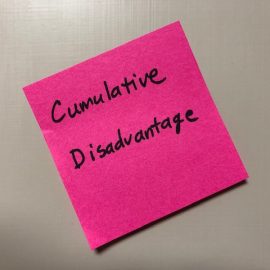
Shhh…the first rule of succession planning is that you don’t talk about succession planning.
Large corporations and many smaller businesses engage in succession planning. Most companies keep this process secret and highly confidential.
Employees often perceive it as a mysterious, unknowable and threatening process – if they are aware of it at all. We’re going to pull back the curtain and reveal some of the secrets.
Why is it important to understand succession planning?
Your performance, career and future are being discussed and directed during succession planning. You should be aware of the process and understand how to position yourself for success.
If you lead people, you will probably participate in meetings and should understand the process.
If you desire to move up the career ladder in a corporate environment, you should pay attention.
Like understanding your corporate pay, knowing about succession planning helps you navigate your career.
What is succession planning?
In the succession planning process, senior leaders evaluate employees and discuss their skills, potential for taking on bigger roles and future career opportunities.

Human Resources (HR) and the Talent Management group generally drive the process, but senior leaders make the decisions.
It involves assessing individual employees, collecting data on them, discussing them in meetings and making decisions. These decisions are often significant ones such as promotions, desirable assignments, and being nominated for leadership programs.
Some organizations refer to the process as Talent Reviews or Talent Assessment.
How does it benefit the company?
Succession planning focuses on the future of the company. It considers both strategic growth needs and risk management.
Meeting strategic needs
As senior leaders set strategy for the next year, they need to determine if they have people who can execute the strategy. New strategic direction requires new skills.
Succession planning helps track the skills and abilities (technical and leadership) of individual employees. Leaders use this information to decide if they can find internal people for new projects or if they need to hire new talent externally.
Building a pipeline of talent

The company needs to ensure that there are employees ready to take a bigger role if a key person leaves the company. New roles open up due to strategic changes or growth.
Leaders protect the company by knowing the strengths and weaknesses of employees, so they can be evaluated for open roles. The company proactively identifies and prepares high-potential employees and the next generation of leaders.
Evaluating current employees and considering other jobs they could fill helps create a talent pipeline.
The talent pipeline creates a chain of roles and successors across many levels. It becomes a chess board of moving talent into new roles and needing to back fill them with other people.
The talent pipeline can also assess the talent health of big groups of people in mass incumbent roles. For example, the succession planning process for a large retailer could evaluate the number of assistant store managers who are ready to be store managers. The company needs to have a strong pipeline with many assistant managers ready to move to the next level.
Making a bench chart
A bench chart is a document that helps manage the talent pipeline by getting specific, detailed and tactical. For each position, the bench chart indicates who is currently in the role (incumbent) and employees who could be moved into the role (potential successors).
A position often has multiple people listed on the bench chart as potential successors. The process evaluates each person in terms of how soon they could move into the new role if needed. Some of them might be “Ready Now” for the role and some might be ready in 1 – 3 years.

Sometimes a position does not have a potential successor. In those cases, the company plans to either train someone to be a successor or to hire externally to fill the role.
If a position comes open, the leadership team uses the bench chart as a road map for filling the role. They will consider the successors on the bench chart before looking at other candidates.
Preparing employees
Company success depends on having a group of employees who are well-trained and ready to take on expanded roles.
Succession planning helps find people with the potential to take on bigger roles. The company can invest its limited resources in those key people before they are needed.
This preparation includes setting plans to work on skill gaps, keeping track of them and providing customized training and development opportunities.
Succession planning discussions can determine who gets the opportunity to attend leadership development programs, take higher level technical training and get certifications and lead high visibility projects.
Understanding succession planning can help you manage your own career and participate in the process.



